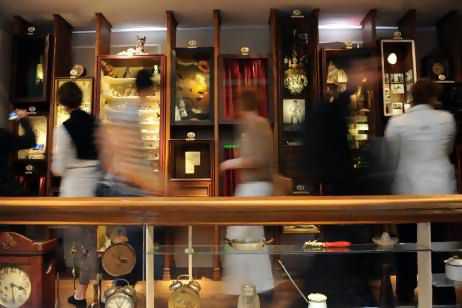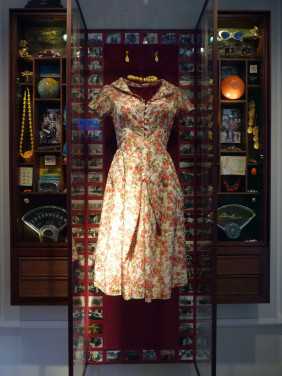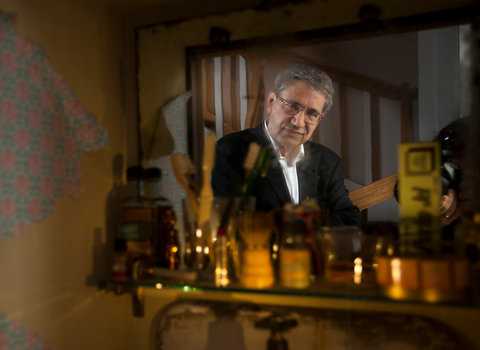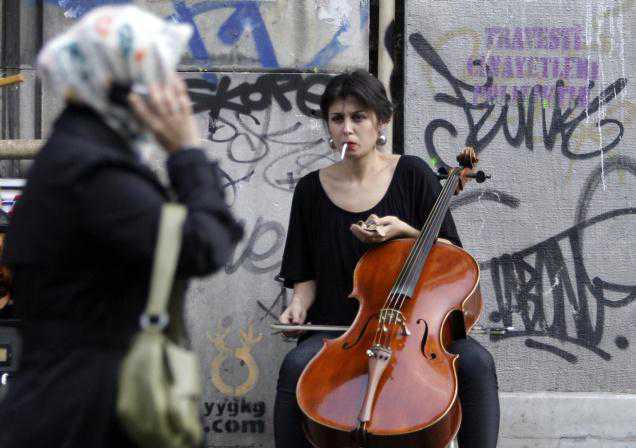Objects of desire
Orhan Pamuk and his objects. Photo: Refik Anadol and Innocence Foundation
IN A city of dizzying contrasts – where East straddles West, past collides with present, and Christianity and Islam maintain an uneasy truce – Istanbul’s newest museum teeters on the altogether more intriguing divide between truth and fiction.
The Museum of Innocence, which opened in April 2012, is the physical manifestation of the celebrated 2008 novel of the same name by Nobel prize-winning Turkish author Orhan Pamuk.
The novel, set in 1970s Istanbul, charts the ill-fated love affair between its narrator, Kemal B – a wealthy businessman – and Fusun, a distant relative with whom he becomes infatuated. A tale of obsessive longing, the novel – and the museum that bears its name – explores the city’s history via objects collected by Kemal to remind him of his beloved, a young woman whose fate is sealed when she defies social mores by taking a lover out of wedlock.
Pamuk documents his extraordinary parallel endeavour – collecting objects for his museum that will inform the lives of his imaginary characters – in his subsequent, non-fiction book The Innocence of Objects, now available locally.
Advertisement
The Innocence of Objects follows Pamuk as he scours the city’s junk shops, all the while searching for the ideal building to house both his fictional heroine and his mounting collection. When he at last finds ”a dainty building worthy of Fusun”, he decides: ”Yes, Fusun had certainly lived here; I was sure of it.”
In this enchanting place where Pamuk’s imagination makes its leap from page to physical reality, an elaborate literary adventure unfolds. Inside a narrow, five-storey house in a backstreet of the increasingly fashionable Beyoglu district, the museum’s rusted keys, black-and-white photographs, stopwatches and film clips evoke a glamour and gentility far removed from the bustling metropolis that is modern-day Istanbul.
”Putting these things together in a box,” Pamuk writes in The Innocence of Objects, ”measuring every centimetre, and making the slightest change in search of a particular harmony, made me feel as if I were building a world – just as I do when I write a novel.”
Objects are arranged in wood cabinets – or ”vitrines” – that correspond to chapters in the novel.
Chapter one is represented by the butterfly earring that falls from Fusun’s ear as the couple make love for the first time. The death of Kemal’s father in chapter 47 is told through a crowded display of coins, cufflinks and ties. Across an entire wall, lipstick-stained cigarette butts smoked by Fusun between 1976 and 1984 are pinned down like a collection of exotic insects. Pamuk’s accompanying caption reads: ”Kemal was proud of his 4213 cigarette butts, and whenever he brought them out he would tell me their stories. He carefully dated each one, making additional notes here and there, some of which I used in the novel. Here you will find the relevant notes under each cigarette butt, written out in my own handwriting, as Kemal requested.”
Like the poetic assemblages of American artist Joseph Cornell, each cabinet invites the viewer on an intriguing visual journey whose destination is never clear.
Pamuk playfully offers up the ”evidence” of his characters’ lives: newspaper clippings, a dress worn by Fusun during her nerve-racked driving lessons, even her driver’s licence, albeit with face blurred. In one cabinet, a map of Istanbul charts the scenes of key events in the novel as if they really happened. Newspaper photographs of ”fallen” women, their eyes covered by black bands, speak of polite society’s unforgiving nature.
”Because the press used the same device in photographs of adulteresses, rape victims and prostitutes,” Pamuk writes, ”the photographs of women with black bands over their eyes were so numerous that reading a Turkish newspaper in those days was like wandering through a masquerade.”
The novel traces the beginning of Fusun’s own fall to her entry in a local beauty pageant, an event captured in a newspaper clipping of a swimsuit-clad beauty in vitrine No.36.
Amid so many intriguing falsehoods, the visitor can only guess at where storytelling begins and history ends. The museum’s lovingly displayed objects reveal themselves as props in an elaborate game, a series of puzzles that can never be solved. As a fellow visitor commented: ”It’s really cheeky.” Cheeky indeed, but also undeniably poignant.
In the tiny upstairs bedroom where Kemal ends his days, surrounded by a tricycle, suitcase, bedside table and slippers, Pamuk writes: ”Between 2000 and 2007, Kemal Basmaci lived in this room, where Orhan Pamuk sat and listened to his story. Kemal Basmaci passed away on 12 April 2007.” Nearby, pages from the novel’s original manuscript, written between 2002 and 2008, along with empty pen cartridges and sketches showing how items should be displayed in the museum, point once again to the nature of obsession, both Kemal’s and his creator’s.
Surrounded by crumbling houses and the usual rubble of Istanbul’s streets, the Museum of Innocence stands as a lovely curio and elaborate love letter to a time of beauty and hope.
Its cabinets demand order from the ephemera of the city’s history, corralling the discarded and apparently meaningless into a universal tale of yearning and loss. As though the scattered lines of history have been picked up and rearranged into visual poetry.
■ The Museum of Innocence is open Tues-Sun. Free entry with a copy of The Museum of Innocence.
■ The Innocence of Objects by Orhan Pamuk, is published by Abrams, $45.




